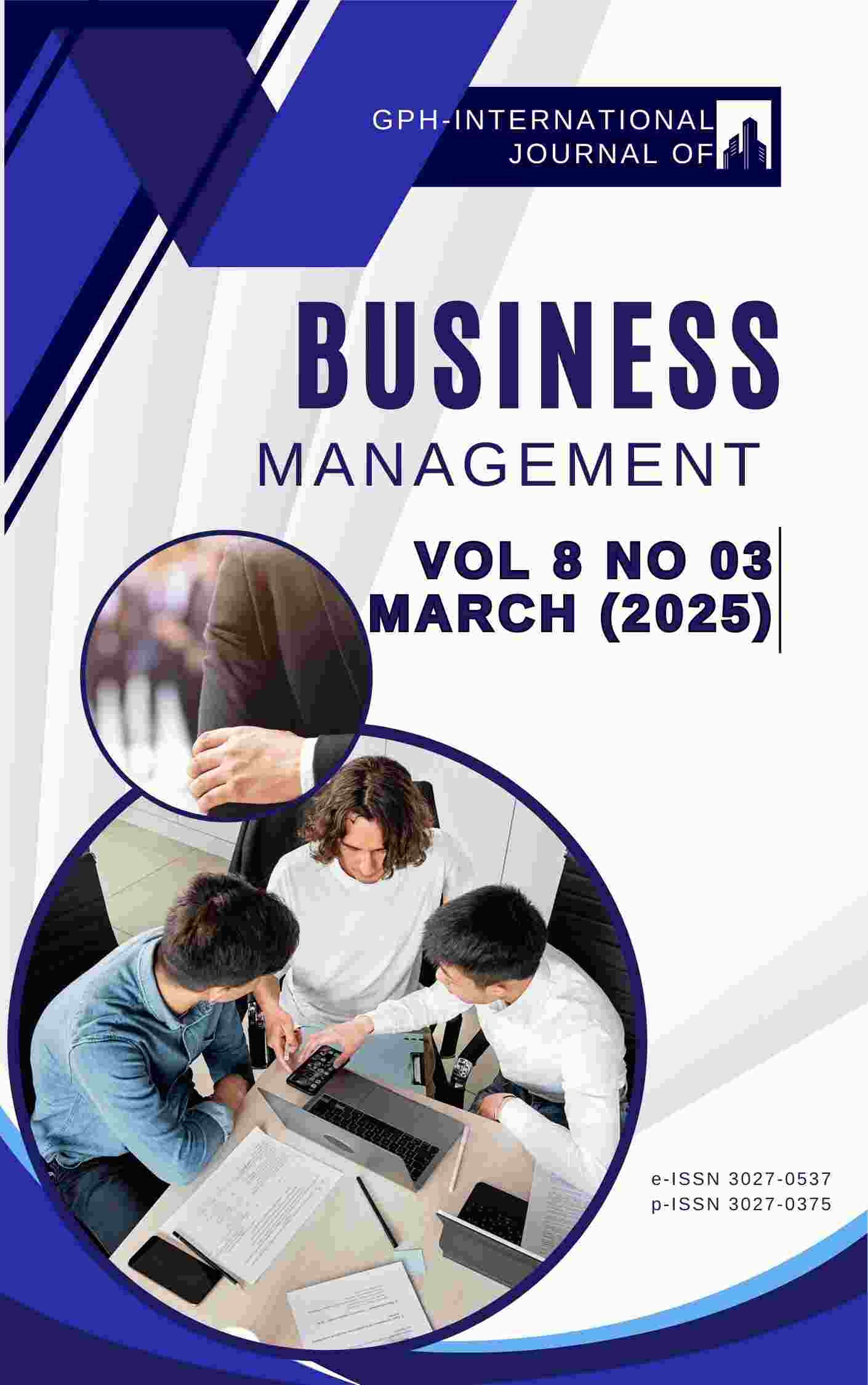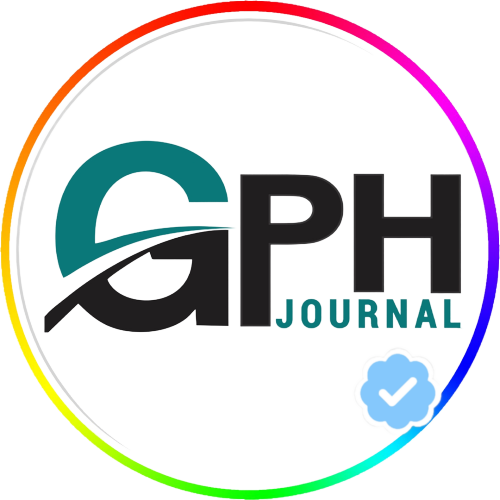Supply chain agility and marketing performance of hotels in Rivers State
Abstract
The purpose of the research was to examine the connection between marketing success and the agility of the supply chains of four-star hotels in Rivers State. A nomothetic and quantitative methodological stance informed the study's guiding principles. To recruit participants, the researchers used a cross-sectional survey methodology. Eleven point seven hotel employees from four-star establishments in Rivers State make up the study's population. Using Spearman's Rank Correlation Coefficient, four hypotheses were examined statistically. Results from these analyses indicated significant, positive and strong relationships between the dimensions of supply chain agility (accessibility and flexibility) and measures of marketing performance (cost efficiencyand on-time delivery). Based on the findings, this study concluded that supply chain agility is a veritable and strategic tool that has the capability of improving the marketing performance of hotels. This study therefore, recommended that hotel management should focus on supply chain lead-time and adopt an end-to-end supply chain automation considering the repetitive changes of the customer needs and market competition, as this would lead to improve performance. Lastly, management of four-star hotels should build collaborative network among competent suppliers, as these actions would result to access to useful information that addresses unforeseen challenges in times of scarcity of material inputs.
Downloads
References
Barney, J. (1991). Firm resources and sustained competitive advantage, Journal of Management, 2(4), 23-33.
Bowersox, D. J., Closs, D. J., & Stank, T. P. (1999). 21st century logistics: Making supply chain integration a reality. Oak Brook, IL: Council of Logistics Management.
Das, A., R. Narasimhan, & S. Talluri, 2006, Supplier integration - Finding an optimal configuration: Journal of Operations Management, 5(24), 563-582.
Dubey, R., Altay, N., Gunasekaran, A., Blome, C., Papadopoulos, T., & Childe, S. (2018). Supply chain agility, adaptability and alignment: empirical evidence from the Indian auto components industry (Version 1). University of Sussex.
Flynn, B. B., Huo, B. & Zhao, X. (2010). "The impact of supply chain integration on performance: A contingency and configuration approach."Journal of Operations Management 28 (1), 58-71.
Gligor, D. M. (2013). The concept of supply chain agility: Conceptualization, antecedents, and the impact on firm performance. Marketing and Supply Chain Management Publications and Other Works.
Gligor, D. M., Esmark, C. L., and Holcomb, M. C. (2015). Performance outcomes of supply chain agility: when should you be agile? Journal of Operations Management, 33, 71-82.
Guiffrida A. &Nagi R., (2005). Cost characterizations of supply chain delivery performance, Department of industrial engineering University at Buffalo, USA.
Gunasekaran, E. & Ngai, T. (2004) Information systems in supply chain integration and management. European Journal of Operational Research, 159, 269–295.
Habibullah K. and Joel D. W. (2019). Supply Chain Integration, Learning, and Agility: Effects on Performance. Operations and Supply Chain Management, 12(1), 14-23.
Helfat, C. E., and Winter, S. G. (2011). Untangling dynamic and operational capabilities: Strategy for the (N) ever‐changing world. Strategic Management Journal, 32(11), 1250-1243.
Kagaari, J., Munene, J. C. &Ntayi, J. M. (2010). Performance management practices, employee attitudes and managed performance. International Journal of Educational Management, 24(6), 507-530.
Kim, W. S. (2009a) "Quality Management Strategy in Supply Chain for Performance Improvement", Asian Journal on Quality, 10(3), 43 – 64.
Kim, W. S. (2009b). An investigation on the direct and indirect effect of supply chain integration on firm performance. International Journal of Production Economics, 119, 328-346.
Kumar, S. (2013). Banking reforms and the evolution of cost efficiency in Indian public sector banks. Economic Change and Restructuring, 46(2), 143-182.
Lin, W. B. (2003). Technology Transfer as Technological Learning: A Source of Competitive Advantage for Firms with limited R & D Resources. R & D Management, 33 (3), 327-341.
Lu, Y., & Ramamurthy, K. (2011). Understanding the link between IT capability and organizational agility: An empirical examination. Management Information System Quarterly, 35(4), 931-954.
Niazi, G. (2003). Measuring cost efficiency and productivity change of commercial banks in Pakistan, 1991-2000(Doctoral Dissertation). Quaid-I-Azam University, Islamabad, Pakistan.
Ram-Mohan, T. T., & Ray, S. C. (2004). Comparing performance of public and private sector banks: A revenue maximisation efficiency approach. Economic and Political Weekly, 39(12), 1271-1276.
Rashmi R. P., Duryodhan J., Jamini R. M. and Avinash K. S. (2021). Assessing the impact of supply chain agility on operational performances: PLS-EEM approach.
Ravichandran, T. (2020). Exploring the relationships between IT competence, innovation capacity and organizational agility. Journal of Strategic Information Systems, 27(1), 22–42.
Smith, J. (2018). Agile supply chain strategy and supply chain performance: Complementary roles of supply chain practices and information systems capability for agility. International Journal of Operations & Production Management, 31, 10, 1022-1047.
Stank, T. P., S. B. Keller, & D. J. Closs, 2001a, Performance benefits of supply chain logistical integration: Transportation Journal, 5(41), 32-46.
Swink, M., R. Narasimhan, and C. Wang, (2007). Managing beyond the factory walls: Effects of four types of strategic integration on manufacturing plant performance. Journal of Operations Management, (25), 148-164.
United Nations Educational, Scientific and Cultural Organization (UNESCO, 2020). Impact of Covid-19 on world economy. Paris, France.
Vijay R. K. and Keah C. T. (2010) "Supply chain integration: cluster analysis of the impact of span of integration", Supply Chain Management. An International Journal, 15(3), 207 – 215.
World Health Organization (WHO, 2020). Weekly Covid-19 press release.
Zhao, X., Huo, B., Flynn, B. B., & Yeung, J. H. Y. (2008). The impact of power and relationship commitment on the integration between manufacturers and customers in a supply chain. Journal of Operations Management, 26, 368–388.
The authors and co-authors warrant that the article is their original work, does not infringe any copyright, and has not been published elsewhere. By submitting the article to GPH-International Journal of Business Management, the authors agree that the journal has the right to retract or remove the article in case of proven ethical misconduct.




























